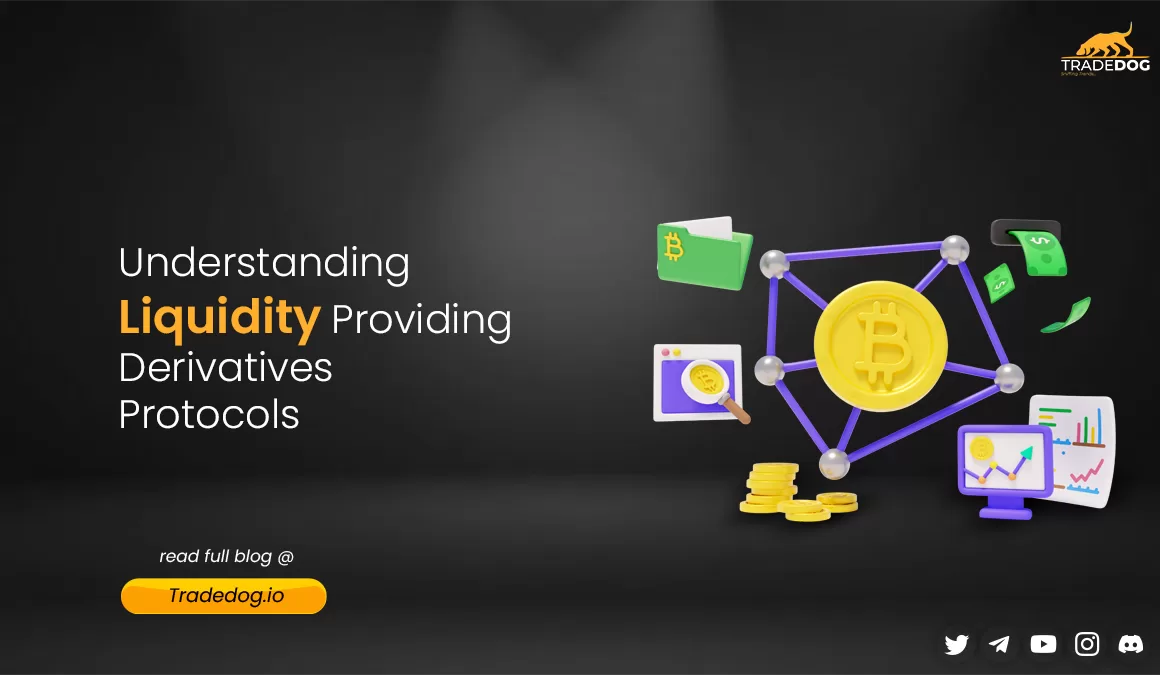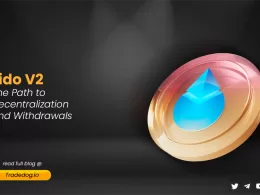Quick Links
At its core, LPDFi stands for Liquidity Providing Derivatives. It’s a groundbreaking concept introduced by pioneers like Logarithm Finance. But why is it so revolutionary? To understand that, we must delve into the intricacies of liquidity in the DeFi space.
Liquidity, in simple terms, refers to how easily assets can be converted into cash or equivalent without affecting the asset’s price. In DeFi, liquidity is paramount. With it, trades become faster, and price slippage increases. Liquidity providers typically deposit assets into liquidity pools in DeFi protocols. In return, they receive LP tokens representing their share in the pool. With LPDFi, these liquidity providers can use their LP tokens to enter into derivative contracts. These contracts can be designed to offer protection against price volatility, impermanent loss, or other market risks. The derivatives can be traded, allowing for further financial strategies and risk management techniques to be employed.
The Rise of LSDfi and the Need for LPDFi
LSDfi: Before LPDFi, LSDfi (Liquidity Staking Derivatives) made waves. Research indicates that liquid staking has amassed a total value of roughly $18.99 billion. This method deviates from conventional staking by allowing participants to accrue staking benefits while maintaining the flexibility to engage in crypto activities, such as DeFi loans or arbitrage trading, with their staked assets.
DeFi platforms generate LSDs as tokens to incentivize users who commit their ETH. In return for their staked assets, stakers are given a liquid and tradable token (liquid staking tokens) at a 1:1 ratio. This token signifies their entitlement to the underlying asset pool and its associated returns. These tokens can be leveraged to cultivate yield in various applications.
Users can entrust their tokens to a liquid staking service rather than staking their tokens and overseeing their nodes individually. This allowed users to get away with the obligatory 32 ETH staking threshold, appealing to ETH owners keen on staking and reaping its benefits simultaneously.
Challenges: However, as with any innovation, LSDfi had its challenges. While it did address some liquidity issues, the DeFi space still had gaps that needed filling, which are
- Impermanence and Volatility Risks:
LSDfi allows users to trade staked assets, but this can lead to impermanent loss, where the value of the staked assets diverges from the market value.Volatility in the underlying assets can lead to unexpected losses for stakers.
- Complexity of Management:
Managing liquid staking positions can be complex, especially for individual users. It requires a deep understanding of the DeFi space and the specific mechanics of the staking protocol.
- Regulatory Uncertainty:
The legal landscape for DeFi and staking derivatives is still evolving. Regulatory changes could impact the legality or viability of certain LSDfi practices.
- Security Concerns:
Like other DeFi protocols, LSDfi is subject to smart contract risks, including bugs and vulnerabilities that could lead to loss of funds.
- Liquidity Challenges:
Depending on the protocol and the assets involved, there may be liquidity challenges that affect the ability to trade or redeem staking derivatives.
- Interest-Bearing Stablecoin Contradictions:
In some LSDfi implementations, the creation of interest-bearing stablecoins may contradict the incentive for users to leverage their positions, leading to potential drawbacks in the system’s design.
- High Liquidity Costs:
Some LSDfi protocols may lack sustainable incentives, resulting in high liquidity costs. This can make participation less attractive for users.
- Accessibility and Usability:
The complexity of some LSDfi protocols may deter less experienced users, limiting accessibility and adoption.
- Interoperability Issues:
LSDfi protocols may face challenges in interacting with other DeFi protocols or traditional financial systems, limiting their utility and efficiency.
- Ethical and Governance Concerns:
The decentralized nature of LSDfi may raise questions about governance, ethical considerations, and the potential for manipulation or abuse within the system.
Logarithm Finance: Leading the LPDFi Revolution
Logarithm Finance isn’t just another player in the DeFi space. It’s a trailblazer, leading the LPDFi narrative and offering tangible solutions to existing liquidity challenges.
Products
- Liquidity Shell: Think of this as a guiding light for LP tokens. It directs them to the best liquidity venues in the market, ensuring that users get the highest possible returns. In a world where every percentage point counts, this is a game-changer.
- Nautilus Vault: This is where innovation meets utility. Users can deposit USDC and watch their investments grow. How? The protocol uses the logic of Nautilus Vaults to open active LP positions on Uniswap V3, hedging against volatile assets and ensuring maximum returns.
The Future of LPDFi: A Glimpse into Tomorrow
- Cross-chain Liquidity: One of the most significant advantages of LPDFi is its ability to bridge the liquidity gap between different decentralized exchanges (DEXs). This means seamless, cross-chain transactions, breaking down barriers and silos.
- Capital Utilization: In the financial world, capital efficiency is king. LPDFi ensures that assets are deployed across multiple DEXs simultaneously. This not only ensures optimal use of capital but also maximizes returns.
- Risk Management: Financial systems are only as strong as their weakest link. By distributing liquidity across different chains, LPDFi decentralizes risks. This enhances the overall stability of the system, making it more resilient to shocks.
- Reduced Transaction Costs: It’s not just about making money; it’s also about saving money. By aggregating liquidity, LPDFi can significantly reduce transaction slippage. This translates to lower transaction costs, making DeFi more accessible and affordable.
Conclusion
The world of DeFi is dynamic, ever-evolving, and full of potential. LPDFi, with its innovative solutions and promise of enhanced liquidity, stands at the forefront of this revolution. With industry leaders like Logarithm Finance championing its cause, the future looks bright. As we stand at the cusp of this new era, one thing is clear: LPDFi is not just a trend; it’s the future of DeFi.









